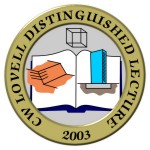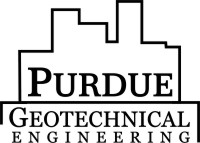
2nd C.W. Lovell Distinguished Lecture
| - |
April 18, 2004
Kenji Ishihara
Performance of Piles as Evaluated by Three-Layer Model
There are cases of liquefaction-related damage to piles during earthquakes which are caused by an excessive lateral movement of the liquefied soils. Generally speaking, two different phases in the pile response have to be recognized: one is the behavior of piles in the course of cyclic ground shaking, and the second is the pile response during the subsequent lateral spreading of the liquefied soils. At the time of the 1995 Kobe earthquake, a majority of piled foundations in the area of waterfront suffered damage due to the lateral spreading of the ground. Hence, it would appear that the pile damage by this cause is equally or more important than the damage caused by the cyclic movement of the ground during the main shaking of the earthquake. In view of this, several cases of the pile injury during the Kobe earthquake were addressed and examined by Ishihara (1997) including detailed in-situ investigation on the damage features, soil conditions and ground displacements. Furthermore, many attempts have been done to clarify the mechanism of the pile damage by means of large-scale shaking table tests and centrifuge loading tests. New concepts and analysis procedures have also been proposed in an effort to explore design methodologies for piles undergoing lateral spreading. These include the works by O'Rourke et al., (1994), Tokimatsu and Asaka (1998), Hamada (2000), Yasuda and Berrill (2000), Finn and Thavaraj (2001). Recently, Cubrinovski and Ishihara (2002; 2004) developed an equivalent linear method to analyze the response of piles undergoing the lateral displacement. In this method, the pile is assumed to be embedded in a deposit consisting of three soil layers in which soils in each layer and the pile itself are postulated to obey bi-linear and tri-linear load-displacement relationships, respectively. This method of analysis will be applied to back-analyze and elucidate the cause and mechanism of the damage to the pile foundations beneath the spherical tanks which occurred at a tank farm located in Mikagehama Island.
About Kenji Ishihara
| - |

Kenji Ishihara, past president, ISSMFE, obtained his PhD. in 1963. From 1966 to 1967, he was a Visiting Research Associate at the University of Illinois in Urbana U.S.A. working under the supervision of Professor P.B. Peck. He has been affiliated with the University of Tokyo since then, taking the post of professorship in geotechnical engineering for the period of 1977-1995. He has been Professor of Civil Engineering at Science University of Tokyo since 1995. He also teaches now at the Chuo University in Tokyo.
He served as secretary of the ISSMFE Japanese National Committee between 1970 and 1976 and acted as Vice-President of Asian region of ISSMFE in 1989-1993. He acted as chairman of TC4 in ISSMGE between the periods of 1985-1994. He took the office as President of ISSMGE for the period of 1997-2001.
His major research interest covers problems in the soil dynamics in earthquakes, including Liquefaction, and seismic stability of slopes and earth structures.
Professor Ishihara has served on various occasions as consultant or adviser to UNESCO projects (Balkan region, India) and UNDP projects (Chile, India, Iran). He has participated in the geotechnical investigations of recent earthquakes worldwide such as those in Romania (1977), Yugoslavia (1979), Chile (1985), Mexico (1985), Ecuador (1986), Armenia (1988), Tajikistan (1989), Philippines (1991) and Iran (1991). He is the author of a book "Fundamentals of Soil Dynamics" (1974) and text book "Soil Mechanics" (1988) both in Japanese, and has recently published through Oxford Press an English book entitled "Soil Behaviour in Earthquake Geotechnics."
He has been honored with the 33rd Rankine Lecture of the British Geotechnical Society in 1993, the Terzaghi oration in 1997 at 14th ICSMGE in Hamburg, the 3rd H.B. Seed Medal of ASCE in 1998 and the Japan Academy Prize in 2000.
Photos of 2nd C.W. Lovell Distinguished Lecture
| - |


